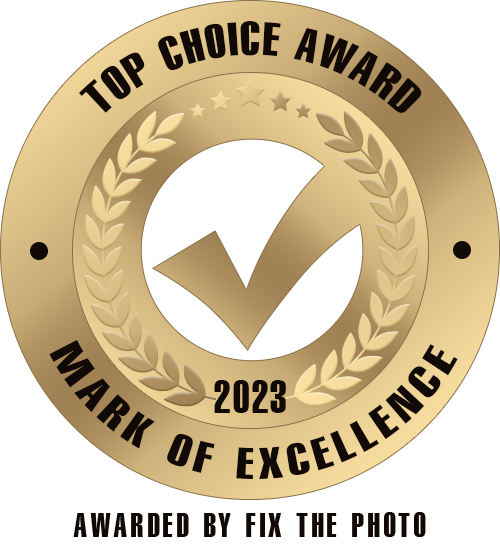Keeping up with the ever-changing digital landscape is no easy feat.
From AI & Machine Learning to the rise of voice and visual search advertising capabilities, all taking place alongside increasing privacy regulations – the most important PPC trends will have the biggest impact on the world of digital marketing in the coming year.
In order to stay ahead of the curve, it’s important to understand the latest PPC marketing trends so that you can leverage them to your advantage and stay ahead of the competition.
Here are the top PPC trends 2022 that you should be aware of now and in the future!
Top PPC Trends 2022
Transition to AI & Machine Learning
Artificial intelligence and machine learning are quickly becoming a core focus of the paid advertising landscape.
One of the most significant markers of this trend is Google’s rapid move to machine learning, changing marketing strategies across the globe. This technology is changing the way that ad campaigns are run and how ads are served, making it easier than ever to target the right consumers with the most relevant ads.
As the world’s default search engine, Google’s adoption of machine learning doesn’t come as a surprise. It’s been in the pipeline since early 2017, when they first started testing “smart bidding.” But in 2018, they took things to the next level by rebranding smart bidding strategy as “target CPA” and “maximize conversions.”
AI technology allows Google to automatically optimize your PPC campaigns by constantly learning and adapting to real-time data. Google’s core promise in regards to these changes is that you can see significant improvements in your campaign performance with less effort on your part.
For advertisers, these PPC trends have both pros and cons: while machine learning does allow for advanced PPC automation and bidding, the flip side is less customisation and control over ad delivery.
Machine Learning & PPC Campaigns in Action
Google Ads
Responsive Search Ads
Responsive ads are one example of how Google is using artificial intelligence and machine learning to enhance advertising performance. From 30 June 2022, Responsive Search Ads are set to replace expanded text ads as the default Google Ads format. This move is a reflection of the influence of the global automation industry and signifies Google’s full adoption of machine learning technology and PPC automation.
How will this change the PPC game?
You can add up to 15 different headlines and 4 different descriptions, allowing for up to 43 000 ad copy variations. Google’s search engine algorithm selects the best headlines and descriptions based on the search queries and other factors like user location and past behaviour.
This is a big shift for paid advertising since it allows businesses to create ads that are more relevant to users, leading to higher click-through rates and conversions.
Performance Max Campaigns
Another new Google Ads feature that utilises machine learning is Performance Max Campaigns. This type of PPC strategy is a goal-based digital campaign designed to maximise conversions while still maintaining a return on investment (ROI).
Performance Max campaigns use machine learning algorithms to automatically bid for ad placements and adjust ad spend based on conversion data. This allows businesses to get the most out of their PPC campaigns with minimal effort.
Additionally, Performance Max Campaigns are displayed across all major Google Display Network channels such as Search, Display, Apps, YouTube Ads, Shopping, Gmail and Maps.
One disadvantage to Performance Max Campaigns as a whole is that once the campaign budget is set, there is little choice as to channel placements (ad placement). In some cases, this might not be the most ideal solution for businesses that want to focus their PPC efforts on specific channels.
Bing Ads
As one of the alternative PPC platforms, Microsoft is constantly innovating and changing its advertising platform to better meet the needs of its advertisers. Here are some of the latest trends in Bing Ads that you should be aware of:
Bing is now allowing advertisers to use Dynamic Search Ads (DSAs). DSAs are a great way to quickly and easily generate relevant ads for your products or services, and they can be a valuable addition to your existing PPC campaigns.
Bing is also making it easier for advertisers to mobile devices with their new ad extensions. These extensions allow you to add extra information to your ads, such as your business address, phone number, or even directions to your store.
Finally, Bing is continuing to invest in their artificial intelligence capabilities. Their new “smart bidding” features allow you to automatically adjust your bids based on real-time data, which can help you get the most out of your PPC ads.
Data Driven Attribution Models
Move Over Last-Click Attribution
With the increasing use of data and technology, attribution models are also evolving. In the past, last-click attribution was the standard model used to assign credit to conversions. However, this model is no longer as effective as it once was, as it doesn’t take into account all of the touchpoints that a consumer has with a brand before a conversion is made.
Now, data-driven attribution models are becoming more popular as they provide a more holistic view of the consumer journey and how each touchpoint contributes to a conversion. These multi-touchpoint models are still being perfected, but they hold a lot of promise for the future of PPC.
Data-driven attribution uses your conversion data to understand which interactions with your ads led to conversions and how much credit each interaction deserves. This is different from rules-based attribution, which relies on pre-determined rules (like “first click” or “last click”) to assign credit to conversion events.
This allows you to better understand your customer journey and the conversion paths that are most valuable to your business. It also allows you to see how different interactions with your ads (including ad type, position, and format) impact conversion outcomes.
This can have a big impact on the way you manage your PPC marketing campaigns, as it may change the way you allocate budget and measure success.
Drawbacks of data-driven attribution models:
- The need for large amounts of high-quality first-party and third-party data in order to train the model. This can be a challenge for businesses with little data or shorter sales cycles.
- The potential for model bias if the data used to train the model is not representative of the wider population.
- The need for ongoing maintenance as your business and customer journey evolves over time.
- Certain types of conversion actions require a minimum of 300 conversions and 3000 ad interactions across the Google Display Network within 30 days to be eligible for data-driven attribution (Data-Driven Attribution, Google, 2022)
Things to consider:
If you’re thinking about using data-driven attribution for your PPC marketing campaigns, there are a few things to keep in mind.
Gather Data
First, you’ll need a large enough volume of high-quality conversion data to train the model.
Be Aware of Model Bias
Be aware of the potential for model bias and make sure that the data you’re using to train the model is representative of your entire customer base.
Continuously Maintain & Update
Ongoing maintenance is required to refine the multi-touchpoint attribution process and to keep your attribution model up-to-date as your business and the customer journey evolves over time.
Data attribution models are a significant shift in the way we think about PPC marketing, and they have the potential to revolutionize the way we allocate budgets and measure success. If you’re thinking about using data-driven attribution with future ads, make sure you understand the challenges and benefits before making the switch.
The Rise of Native Video Ads
Responsive Video Content Across all Leading Platforms
Video advertising is nothing new, but in recent years we’ve seen a shift from traditional pre-roll and mid-roll video ads to native video ads that are more seamlessly integrated into the content that consumers are already watching. This change is driven by the increase in streaming services and the growing popularity of social media platforms like Tik Tok, YouTube and Instagram.
With native video ads, businesses have a unique opportunity to reach their target audience with highly relevant and engaging content. But there are a few things to keep in mind before you get started with this particular PPC trend.
Leading PPC Platforms are quick to follow.
70% of YouTube watch time happens on mobile devices. To meet the needs of viewers, brands need to deliver mobile-first video content that is both engaging and relevant.
In 2018, Google’s vertical video ads for mobile users were launched to enhance the delivery of video ads across the Google Display Network. Vertical ads are a new video ad type specifically designed for mobile devices and mobile platforms, increasing engagement and responsivity.
As the number of people watching videos on mobile devices continues to grow, we can expect to see more platforms and publishers adopting native video advertising formats.
To make the most of this PPC trend, businesses need to create mobile-friendly video content that is creative and relevant to their target audience.
Tips for creating effective native video ads:
Keep it short and sweet
The average attention span of a human is only 8 seconds, so your video needs to be able to grab their attention quickly.
Make it visually appealing
Use bright, eye-catching visuals and graphics to help your video stand out from the crowd.
Use engaging CTAs
Include a strong call-to-action at the end of your video to encourage viewers to take action
Optimise for mobile
Make sure your video is optimised for mobile devices so that it can be watched easily on any platform.
Native video advertising is one of the most effective ways to reach your target audience. Make sure you keep these three things in mind: relevancy, creativity and a clear CTA are essential for any successful native video ad campaign.
Consumer Security & Data Privacy
Increasing Data Security Regulations Change the PPC Game
With the introduction of GDPR and other data privacy regulations, we’ve seen a renewed focus on consumer safety, privacy and the protection of third-party data. This has had a big impact on the way that businesses collect and use data, as well as how they target consumers and track website traffic, influencing PPC trends both now and in the future.
With the implementation of iOS 14 and the ATT (App Tracking Transparency) framework, significant limitations are placed on third-party pixel tracking.
The new iOS 14 data collection policy most notably affects web conversion event tracking, which will no longer be as reliable for targeted ads and when analysing advertising performance.
What does this mean for advertisers?
Although web conversion tracking will still be possible on iOS 14 devices, the data collected will be much less accurate than it was before. This is because, under the new policy, users will have to opt in to allow Facebook to track their activity across apps and websites.
As a result, it’s likely that fewer people will opt-in to allow Facebook to track their activity, which means that the data used to track web conversions will be less reliable.
This means that businesses will need to find other ways to collect data about their target audience, as well as rethink their advertising strategy to account for the new limitations on data collection.
What will this impact?
- Limitations on tracking user behaviour
- Campaign reporting and performance tracking will be less accurate
- It will be more difficult to attribute conversions to specific campaigns or ad sets
- The effectiveness of retargeting and lookalike audiences will be reduced
- Automated bidding strategies that rely on conversion data will be less effective
What can you do about it?
There are a few things that you can do to mitigate the impact of the new iOS 14 data collection policy on your PPC campaigns:
- Understand event-based optimisation and use it to your advantage
- Use conversion windows to attribute credit to conversions that happen days or weeks after an initial interaction with your ad
- Use data-driven attribution to understand how different interactions impact conversion outcomes
- Review your pixel implementation and make sure that it meets the new requirements
The takeaway?
The new iOS 14 data collection policy will have a significant impact on PPC advertising. Advertisers will need to adjust their strategies and be prepared for less accurate reporting and performance tracking.
We can expect to see more PPC trends surrounding privacy and tracking like this in the coming years as businesses strive to meet the ever-changing regulations surrounding data privacy.
Voice Search, Visual Search & PPC Trends
Advances in Search Mediums Lead the Way
The rise of voice search has been one of the most significant marketing trends in the world of search engine marketing. With 20% of searches in the Google App now done by voice (Think With Google) and the growing popularity of smart speakers and voice-enabled devices, more and more people are using voice searches to find information online.
This presents a challenge for PPC marketers, as traditional keyword-based strategies may not be as effective in a voice search environment.
Here are a few things to keep in mind when it comes to voice searches and PPC marketing:
- Voice search is often used for informational queries, so your search terms need to be carefully chosen to reflect this.
2. The use of long-tail keywords is more important than ever in voice search, as these are more likely to be used in natural speech patterns.
3. The sound of your ad is important in voice search, as people are more likely to remember ads that they can actually hear. This means that using a natural-sounding voice and avoiding jargon language are essential.
4. Keep in mind that people use voice search in different contexts than traditional text search, so your ads need to be relevant to adjust to changes in user behaviour.
5. Because of the way voice search works, people are often looking for local results. This means that if you’re targeting a specific geographic area, you need to make sure your ad is triggered by location-based keywords.
By targeting the right keywords, using natural language, and making sure your ad is relevant to the context of voice search results, you can make sure that your campaigns are still effective in this new environment.
Visual Search & PPC
With the rise of visual search, we are seeing a new trend in PPC marketing: using images instead of text to connect with consumers. This is a natural evolution of user behaviour, as more and more people are used to searching for products and services using images instead of keywords.
Consumers can now use pixel-by-pixel image search engine tools like Google Lens and Pinterest Lens to find products they are interested in, and this is changing the way businesses need to think about PPC marketing. What’s more, visual searches are faster than text-based or voice searches, driving the upsurge in image-based searches.
Instead of targeting consumers with text-based ads, businesses and marketing teams need to start thinking about how to use images to reach their target audience. This means creating visually-compelling ads that are optimised for image search engines is key to the PPC advertising process.
There are a few things to keep in mind when creating visual ads for PPC marketing:
- Use high-quality images that are visually appealing and relevant to your product or service.
- Optimise your images for image search engines by including keywords in the file name and alt text.
- Create visually distinctive paid ads that will stand out from the competition
The rise of visual search is changing the landscape of Pay Per Click marketing, and businesses need to start thinking about how to use images to reach their target audience. By using high-quality images and optimizing them for image search engines, you can create visually distinctive ads that will help your business stand out from the crowd.
Virtual Reality Ads
Virtual reality (VR) ads are advertisements that use virtual reality technology to create an immersive, realistic experience for the viewer.
As an immersive storytelling tool, brands across the world are leveraging the power of VR to create ads that are truly unforgettable. And with the rise of affordable VR headsets, such as Oculus Rift or Google Cardboard. it’s now easier than ever for consumers to experience these ads.
One outstanding example of virtual reality ads in action is Adidas’s Delicatessen campaign.
The VR marketing campaign immersed audiences in a 360° experience that followed leading athletes Ben Rueck and Delaney Miller through an experiential mountain climb. The campaign was designed to increase brand awareness and consideration for Adidas’ new line of outdoor apparel.
As a PPC trend that is in its earliest stages, businesses and digital marketing teams have the opportunity to create truly unique and memorable experiences for their target audience. If you’re thinking about incorporating VR into your PPC marketing strategy.
If you’re interested in creating VR ads, there are a few things to keep in mind:
1. The cost of creating VR ads is high, so you need to make sure that your marketing budget can meet the costs.
2. VR ads need to be highly immersive and realistic in order to be effective. This means that they require a high level of production value.
3. VR ads are still in their early stages, so you need to be prepared for the possibility that they may not be as effective as other forms of advertising.
4. You need to have a strong understanding of VR technology before you can create VR ads. If you’re not familiar with VR, it’s important to partner with someone who is.
Creating VR ads can be a challenge, but if you’re willing to invest the time and money, they have the potential to be very effective.
Next Steps for Pay Per Click (PPC) Advertising
As we enter a new era in Pay Per Click marketing, it’s important to keep up to date with the latest PPC strategies.
By keeping an eye on the latest trends and adapting your strategy accordingly, you can ensure that your campaigns are effective and efficient. Stay tuned for more PPC trend predictions in 2022!
Looking for a PPC Agency to Grow Your Business?
If you are looking for an experienced and results-driven PPC agency to help grow your business, contact Evolving Digital today. We offer a full suite of PPC services to help businesses achieve success in the digital space.
Our services include Search Engine Marketing, Social Media Marketing, and Display Advertising. Contact us today to learn more about how we can help you grow your business.
What paid search and PPC strategies are you using to stay ahead of the curve?
Share your thoughts in the comments below!







